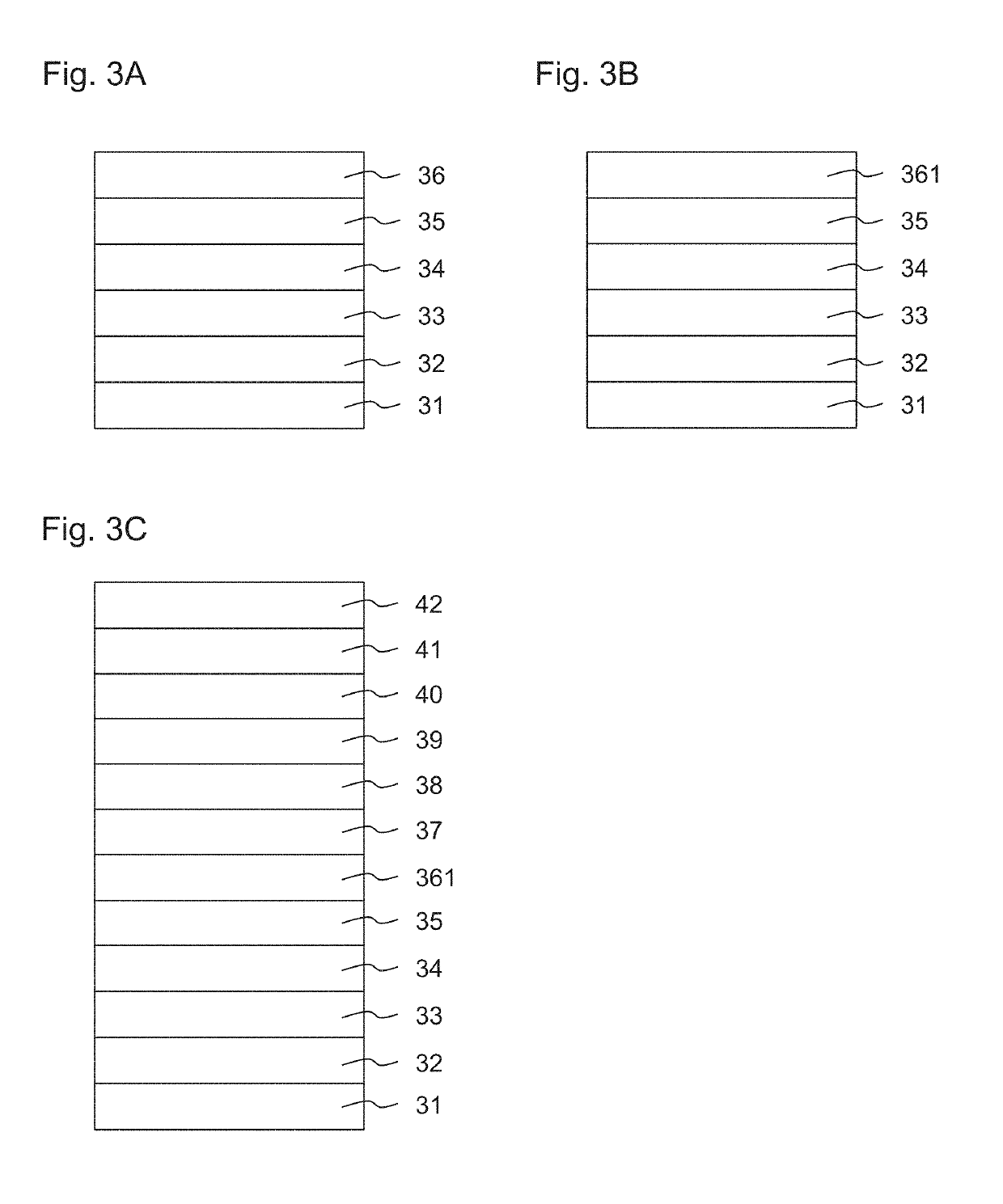Magnetoresistive element, manufacturing method thereof and magnetic sensor
a manufacturing method and magnetic sensor technology, applied in the direction of galvano-magnetic material selection, magnetic measurement, instruments, etc., can solve the problems of yield and quality control of magnetic sensors, passivity on the surface, and the inside of mg film is left under-oxidized, so as to achieve high mr ratio, less variation between wafers, and high repeatability. effect of oxidization
- Summary
- Abstract
- Description
- Claims
- Application Information
AI Technical Summary
Benefits of technology
Problems solved by technology
Method used
Image
Examples
example 1
[0029]A plurality of MTJs were prepared with oxygen exposure as a parameter, and a relationship between oxygen exposure and RA was measured. RA is a product of electric resistance R of a MTJ and area A of a cross section of the element through which the sense current flows, indicating one of characteristics of a magnetoresistive element. The target value of RA is determined for each product to which a magnetoresistive element is incorporated, such as a magnetic sensor, and RA is usually required to fall within a predetermined range for each product. Accordingly, the RA of a magnetoresistive element is required to be less variable or less sensitive to oxygen exposure.
[0030]FIG. 4 shows a relationship between oxygen exposure and RA in Examples and Comparative Examples. Oxygen exposure is defined to be oxidization pressure in the oxidization chamber (Pa)×exposure time (sec). Denoting RA by y and denoting oxygen exposure by x, a relationship between x and y was approximated by the formu...
example 2
[0031]FIG. 5 shows a relationship between a normalized RA and a normalized MR ratio. In FIG. 5, RA and MR ratio of Examples (barrier layer 361 is formed of MgAlO) are normalized by setting RA and MR ratio of Comparative Examples (barrier layer 361 is formed of MgO) at 1. RA of Examples and RA of Comparative Example were about the same level. MR ratio of Examples were about 85% of the MR ratio of Comparative Examples. Based on the fact that the MR ratio of a TMR element whose barrier layer is formed of MgO is typically 150 to 200% and that the MR ratio of a TMR element whose barrier layer is formed of Al2O3 is typically no more than 80%, it was found that, from the viewpoint of MR ratio, the TMR element of Examples whose barrier layer is formed of MgAlO has MR characteristics that enable the TMR element of Examples to be a substitute for conventional TMR element whose barrier layer is formed of MgO.
[0032]FIG. 6 shows a relationship between the oxygen exposure and the normalized MR ra...
example 3
[0033]A preferable range of the ratio (atomic percent) of Mg and Al in MgAl film 36 was studied. Specifically, a plurality of MTJs having MgAl film 36 that has a film thickness of 1.5 nm and different atomic percents of Al were prepared. In all cases, the same oxidization conditions were used. FIG. 7 shows a relationship between the atomic percent of Al and RA and a relationship between the atomic percent of Al and MR ratio. In the range of atomic percent of Al of 78% at or more, MR ratio tends to be significantly reduced. Thus, from the viewpoint of MR ratio, the atomic percent of Al is preferably 75% at or less. RA is reduced to about 20 to 30% of the maximum value when the atomic percent of Al is about 20% at and about 78% at. In these ranges, many under-oxidized regions or non-oxidized regions are believed to exist in barrier layer 361. The existence of these regions is disadvantageous not only from the viewpoint of MR ratio but also from the viewpoint of reliability, such as re...
PUM
 Login to View More
Login to View More Abstract
Description
Claims
Application Information
 Login to View More
Login to View More - R&D
- Intellectual Property
- Life Sciences
- Materials
- Tech Scout
- Unparalleled Data Quality
- Higher Quality Content
- 60% Fewer Hallucinations
Browse by: Latest US Patents, China's latest patents, Technical Efficacy Thesaurus, Application Domain, Technology Topic, Popular Technical Reports.
© 2025 PatSnap. All rights reserved.Legal|Privacy policy|Modern Slavery Act Transparency Statement|Sitemap|About US| Contact US: help@patsnap.com



